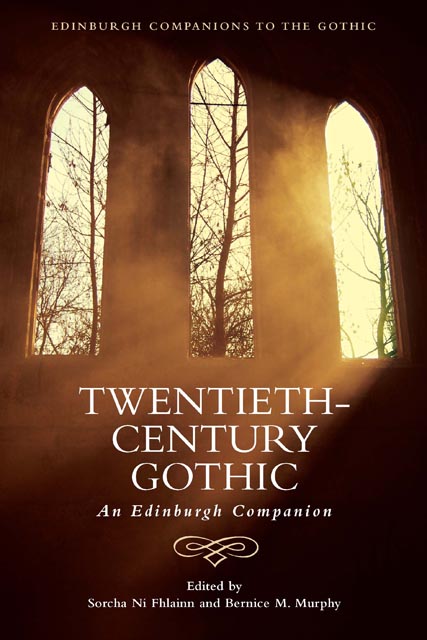15 - Medical Humanities and the Twentieth-Century Gothic
Published online by Cambridge University Press: 18 November 2022
Summary
The medical humanities, a term as difficult to define as the term ‘Gothic’ itself, is not one typically associated with the Gothic. Amid variations, most agree that the medical humanities is an academic field devoted to 1) educating medical practitioners to more ethically, accurately and humanely treat patients through humanities training, and 2) providing therapeutic outlets for patients to process and express their own medical experiences and to make those experiences accessible. While the term ‘health humanities’ is now often preferred for its inclusion of caregivers beyond the medical professions and states of wellness beyond those that require medical care, I use the term ‘medical humanities’ in this chapter because of its roots in the twentieth century.
Unlike the hackneyed anatomists of the eighteenth century or the gentlemen physicians of the nineteenth century, twentieth-century doctors, surgeons and nurses became small actors in the large system that managed them, one that could simultaneously feel like a living, breathing creature and a cold, impenetrable structure. By the 1960s a loss of individuality and humanity within medicine had begun to surface. During a panel of American medical students in 1969, students commented that ‘medical education is not concerned with health, it is dedicated to the study of disease’, and medical training ‘[stresses] not an individual human being with a disease, but rather a disease to which is attached an often vexing and more or less irrelevant personality’. Medicine, while it has always been financially motivated, now turned individual doctors with their own ideals into representatives of an institution that didn't always share them.
Patient anxiety caused by the resulting dehumanisation was encouraged by the physical structure of the hospital building. The term ‘clinical’ is synonymous with cold, detached and unemotional. The hospitals of the early twentieth century stressed the importance of external environment – sunshine and fresh air – for patient well-being, before hospitals became progressively more specialised and industrial. Spaces once built for care were reconstructed for efficiency. The result was a complex labyrinth of individual departments, working together but following their own rules, leaving the patient to be passed back and forth and ultimately feeling lost.
- Type
- Chapter
- Information
- Twentieth-Century GothicAn Edinburgh Companion, pp. 243 - 258Publisher: Edinburgh University PressPrint publication year: 2022



